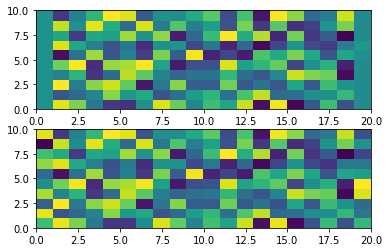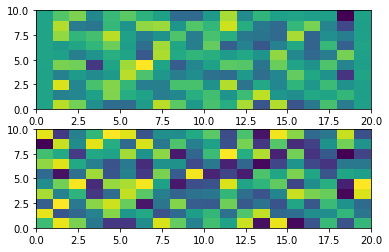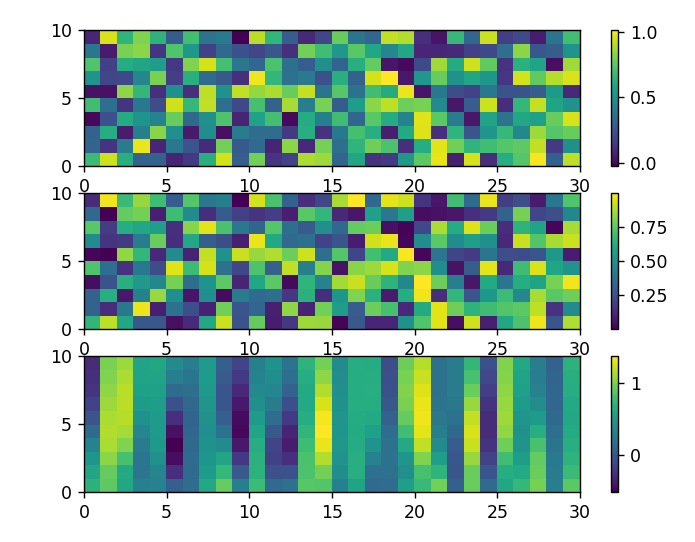import torch
import torch.nn as nn
import matplotlib.pyplot as plt
class Net(nn.Module):
def __init__(self):
super().__init__()
self.embedding = nn.Embedding(10, 20) #수정
self.transformer = nn.Transformer(20, 5,dropout = 0) #수정
def forward(self, src, tgt):
tgt_mask=self.transformer.generate_square_subsequent_mask(tgt.shape[1])
src = self.embedding(src)
src=src.permute(1,0,2)
tgt = tgt.permute(1,0,2)
out = self.transformer(src, tgt, tgt_mask=tgt_mask)
out = out.permute(1,0, 2)
return out
critic = nn.L1Loss()
model = Net()
optim = torch.optim.Adam(model.parameters(), 3e-4)
src = torch.randint(1, 10, (50, 10)) #수정
tgt = torch.rand((50, 10, 20))#수정
tgt_input = torch.cat((torch.zeros((50, 1, 20)), tgt[:, :-1, :]), 1) #수정
epoch = 0
model.train()
for epoch in range(10000): #계속 돌리기 위해 수정
optim.zero_grad()
out=model(src, tgt_input)
loss=critic(out, tgt)
loss.backward()
optim.step()
if epoch%100 == 0:
fig, (ax0, ax1)=plt.subplots(2, 1)
ax0.pcolor(out[0].to('cpu').detach().numpy())
ax1.pcolor(tgt[0].to('cpu').detach().numpy())
plt.show()
epoch +=1
model.eval()
tgt_input = torch.zeros((50, 1, 20))
with torch.no_grad():
for _ in range(10):
out=model(src, tgt_input)
tgt_input = torch.cat((tgt_input, out[:, -1:, :]), 1)
fig, (ax0, ax1)=plt.subplots(2, 1)
ax0.pcolor(out[0].to('cpu').detach().numpy())
ax1.pcolor(tgt[0].to('cpu').detach().numpy())
plt.show()
train시 마지막 결과 그림은 다음과 같습니다.

eval시 결과그림은 다음과 같습니다.

다음과 같이 eval시 trian시의 결과값처럼 도출이 안되는데 되게하는 방법이 없을까요?
